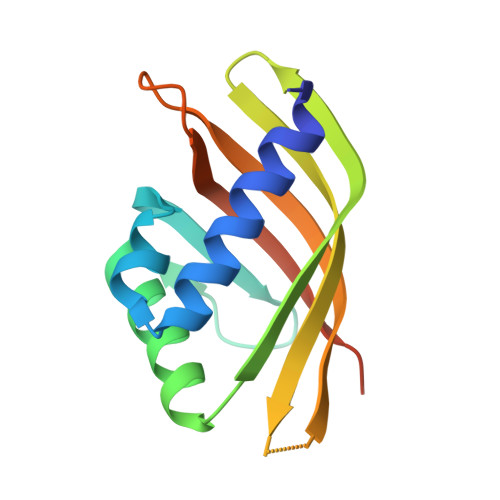Unintended specificity of an engineered ligand-binding protein facilitated by unpredicted plasticity of the protein fold.
Day, A.L., Greisen, P., Doyle, L., Schena, A., Stella, N., Johnsson, K., Baker, D., Stoddard, B.(2018) Protein Eng Des Sel 31: 375-387
- PubMed: 30566669
- DOI: https://doi.org/10.1093/protein/gzy031
- Primary Citation of Related Structures:
5IEN, 5IEO, 5IEP - PubMed Abstract:
Attempts to create novel ligand-binding proteins often focus on formation of a binding pocket with shape complementarity against the desired ligand (particularly for compounds that lack distinct polar moieties). Although designed proteins often exhibit binding of the desired ligand, in some cases they display unintended recognition behavior. One such designed protein, that was originally intended to bind tetrahydrocannabinol (THC), was found instead to display binding of 25-hydroxy-cholecalciferol (25-D3) and was subjected to biochemical characterization, further selections for enhanced 25-D3 binding affinity and crystallographic analyses. The deviation in specificity is due in part to unexpected altertion of its conformation, corresponding to a significant change of the orientation of an α-helix and an equally large movement of a loop, both of which flank the designed ligand-binding pocket. Those changes led to engineered protein constructs that exhibit significantly more contacts and complementarity towards the 25-D3 ligand than the initial designed protein had been predicted to form towards its intended THC ligand. Molecular dynamics simulations imply that the initial computationally designed mutations may contribute to the movement of the helix. These analyses collectively indicate that accurate prediction and control of backbone dynamics conformation, through a combination of improved conformational sampling and/or de novo structure design, represents a key area of further development for the design and optimization of engineered ligand-binding proteins.
Organizational Affiliation:
Departments of Bioengineering and Biochemistry, University of Washington, Molecular Engineering and Sciences, Seattle, WA, USA.















